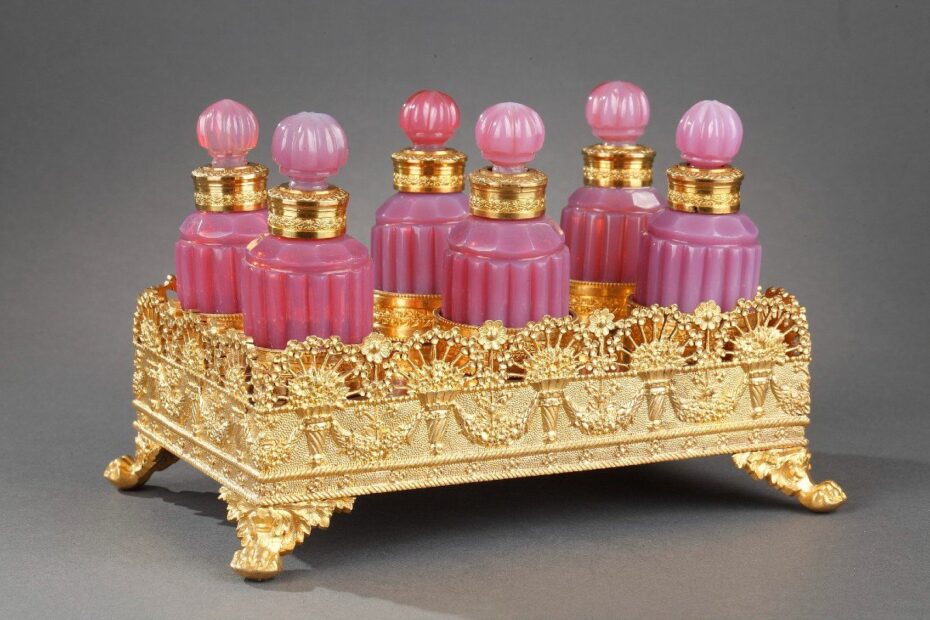
I was doing the rounds at my go-to brocante / Aladdin’s cave and caught a glint of some unique pink glassware on a shelf, tucked away behind some kitschy old china. It wasn’t your average bubblegum pink, this was Charles X’s gorge de pigeon, “pigeon’s throat” pink; named as such because it evokes the iridescent shades of a pigeon’s throat; a hue so rare and opulent that it’s basically the Rolls-Royce of colours. Lost amongst a shelf full of bric-à-brac, the seller didn’t appear to be aware of its possible significance. A hasty exchange of cash and the little pink glass box was mine. Had I bagged a unique rosy rarity coveted by collectors? Before I spill the beans, let’s dig a little deeper and find out exactly why collectors l go weak in the knees for it…
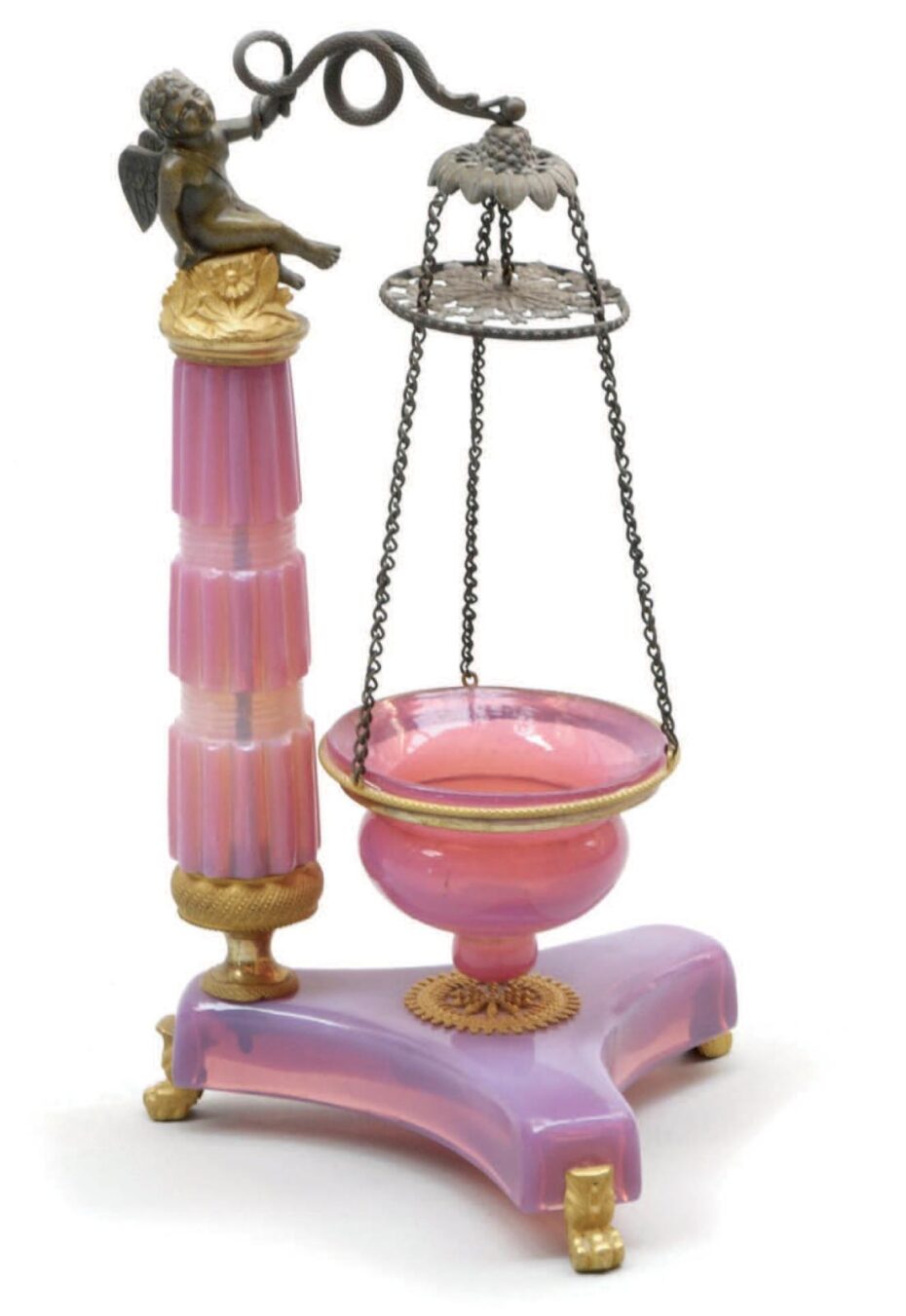
So, why pink, you ask? Picture this: post-revolution France was leaning heavily into a “bring back the glam” vibe. By the time Charles X took the throne in 1824, Paris was ready to forget about guillotines and rebellions and indulge in all things gorgeous and gilded. Artisans took up the challenge, crafting luxury items that reflected this fresh wave of prosperity. Gorge de pigeon opaline glassware emerged as a glamorous showpiece, flaunting that impossibly rich, deep pink hue.
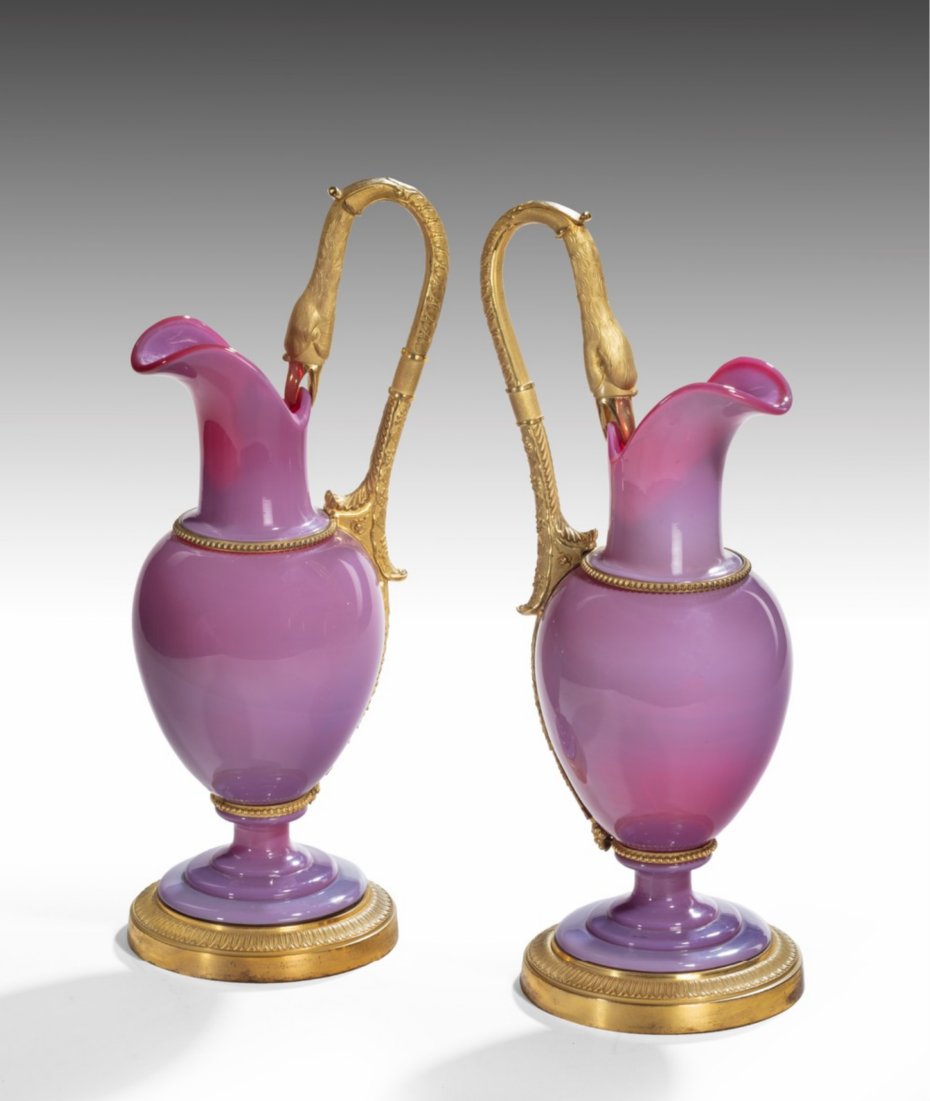
The pink of gorge de pigeon opaline glassware was sophisticated, iridescent, and expensive. Unlike today’s quick associations of pink with femininity, back in the 19th century, pink wasn’t pigeonholed; it was for those who had taste, status, and the means to flaunt it. Now, let’s talk about the alchemy of pigeon pink and why it’s so rare. Gorge de pigeon glassware didn’t just get its color from a slapdash mix of rosy pigments. No, no. Artisans of the time created this luxurious hue through a method requiring patience, precision, and … gold. That’s right — gold chloride was the secret ingredient behind this pink, and it didn’t come cheap. Artisans would painstakingly infuse the glass with just the right amount to achieve that distinctive deep pink, a feat that could only be managed by the top glassmakers of the day.

The color had to “cook” at just the right temperature, and a few degrees too high or low could ruin the shade. This meticulous alchemy was so exacting that only a few pieces survived production without flaws. Those that made it out of the kiln, perfectly pink and intact, became highly prized collectibles almost immediately.
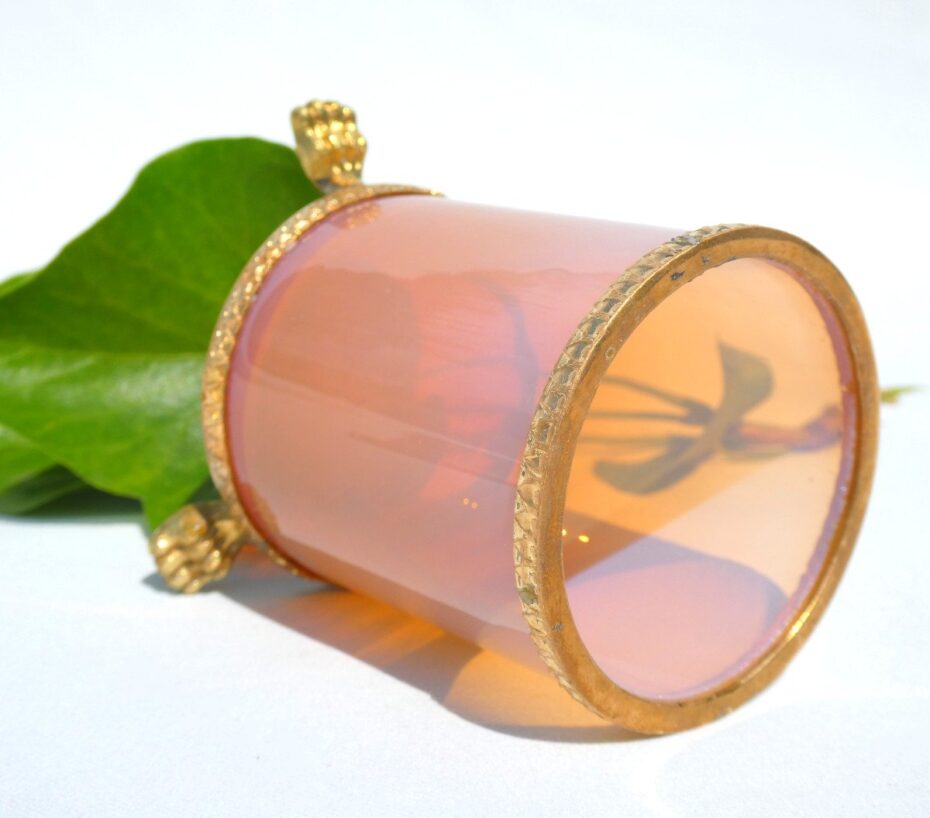
Sure, gorge de pigeon’s colour is its star feature, but let’s not gloss over the artistry. These weren’t mere vessels slapped with a coat of pink. Gorge de pigeon glassware was often sculpted into elegant, flowing shapes that showcased the colour’s depth, like fine crystal holding onto the light. And to make them even more regal, craftsmen adorned them with delicate engravings, gilded filigree, or intricate etchings. Each piece was a testament to the flair and craftsmanship of the Restoration era.
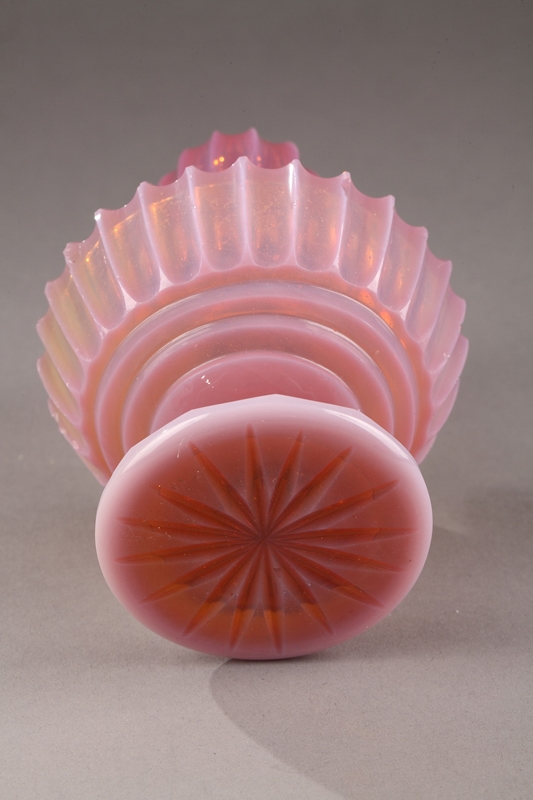
Vases, goblets, and decanters were some of the most popular forms of gorge de pigeon glassware, and they were crafted to be as dazzling as they were delicate. Think of them as functional jewellery for your table, serving both as decor and conversation pieces for the elite of 19th-century France.
Fast forward to today, and the rarity of gorge de pigeon glassware has only made it more alluring. These pieces were produced for such a short period (Charles X only reigned for 6 years) and required such specialised skill that only a few authentic pieces have survived. Over the centuries, many were lost, damaged, or hoarded away in private collections, meaning that finding one on the open market is about as rare as finding an actual pink pigeon.
As for the piece I found gathering dust in a brocanteur’s warehouse? (Pictured below)
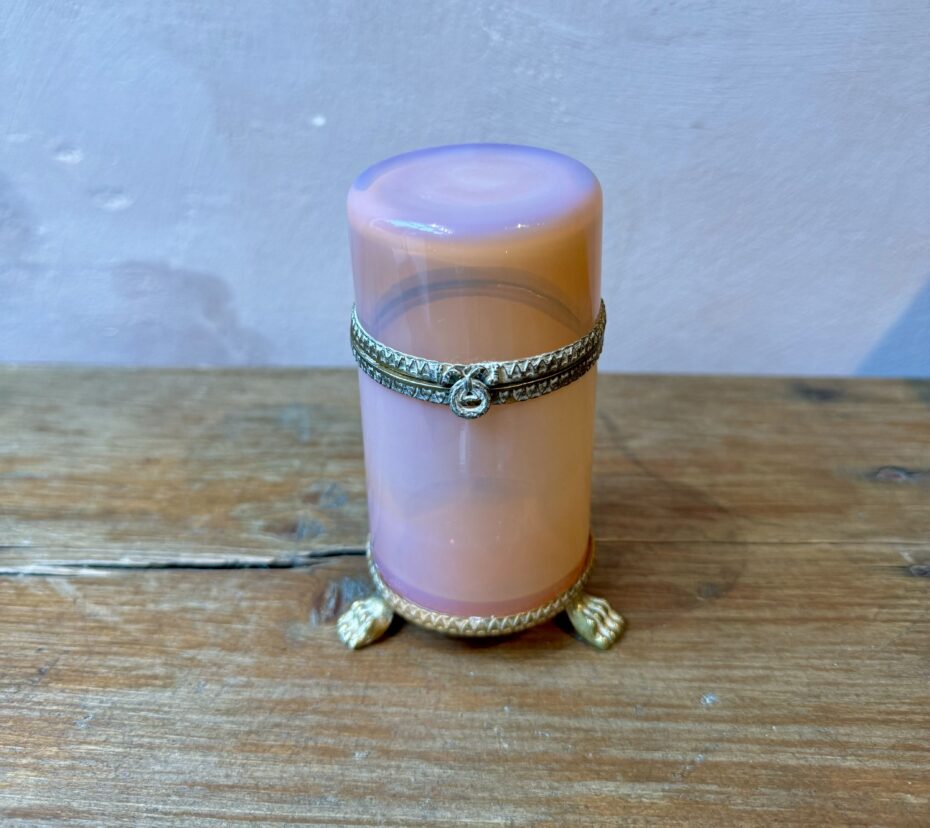
I had it evaluated by specialist who identified it as opaline glassware, but regretfully suspected with near certainty that it is a 1950s Italian reproduction – not worthless by any measure, but not priceless either. My pink bubblegum dreams might have been burst, but it hasn’t soured my taste for the hunt.
I hope you enjoyed playing treasure hunter with me briefly, don’t forget that if you’d like to know the addresses of my secret antique warehouses, or are seeking advice for your collectibles, I’ve created a concierge service for that in the MessyNessy Vault.













